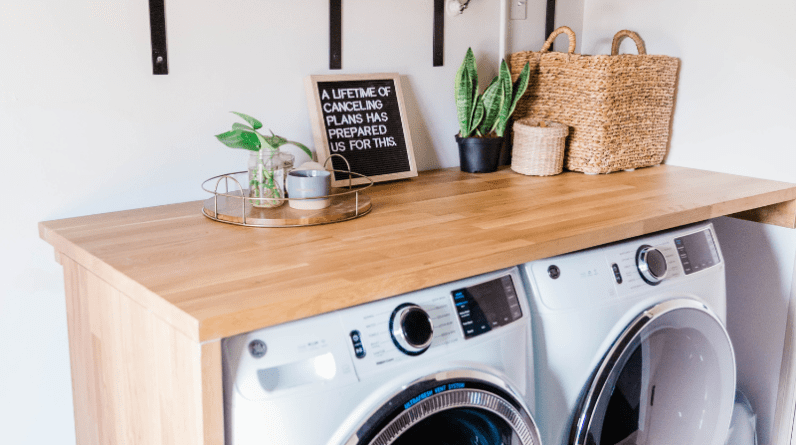
In recent years, the concept of working from home has gained immense popularity. Many professionals and entrepreneurs are looking for ways to create a productive and comfortable workspace within their homes. One innovative solution that has been gaining traction is converting a garage into a home office. This article will explore the design and functionality aspects of transforming your garage into a functional and inspiring home office.
Table of Contents
- Introduction
- Assessing the Space
- Insulation and Climate Control
- Electrical and Lighting Considerations
- Flooring Options
- Storage Solutions
- Furniture and Ergonomics
- Decor and Aesthetics
- Soundproofing and Privacy
- Security Measures
- Natural Light and Ventilation
- Greenery and Plants
- Smart Technology Integration
- Creating a Distraction-Free Zone
- Conclusion
- FAQs
1. Introduction
With the increasing demand for remote work, having a dedicated home office has become a necessity for many individuals. Converting a garage into a home office offers several advantages, including ample space, privacy, and the ability to customize the design according to your needs.
2. Assessing the Space
Before embarking on your garage conversion project, it’s important to assess the space and determine its potential. Take measurements and note any structural elements that may impact the design, such as windows, doors, or support beams. Consider the layout and how it can be optimized for your work requirements.
3. Insulation and Climate Control
Proper insulation is crucial for creating a comfortable and energy-efficient home office. Insulate the walls, ceiling, and garage door to regulate temperature and minimize noise. Additionally, install a climate control system to maintain a suitable working environment throughout the year.
4. Electrical and Lighting Considerations
Ensure that your home office has sufficient electrical outlets to support your equipment and devices. Consider the placement of power sockets strategically to avoid clutter and improve functionality. Install adequate lighting, including ambient, task, and accent lighting, to create a well-lit and inspiring workspace.
5. Flooring Options
Choosing the right flooring is essential for both aesthetics and functionality. Consider durable and easy-to-maintain options such as laminate, vinyl, or engineered wood flooring. Alternatively, carpet tiles can provide added comfort and soundproofing benefits.
6. Storage Solutions
An organized workspace is vital for productivity. Incorporate effective storage solutions into your garage office design. Install shelves, cabinets, and drawers to keep your files, supplies, and equipment neatly organized and easily accessible.
7. Furniture and Ergonomics
Invest in ergonomic furniture to create a comfortable and healthy workspace. Choose an adjustable desk and ergonomic chair to support proper posture and reduce the risk of strain or injuries. Consider additional seating options for meetings or relaxation breaks.
8. Decor and Aesthetics
Create a visually appealing and inspiring work environment by adding personal touches and decorative elements. Paint the walls in colors that promote focus and creativity. Hang artwork or motivational quotes that resonate with you. Incorporate elements that reflect your personality and style.
9. Soundproofing and Privacy
To minimize distractions and ensure privacy, soundproofing measures are essential. Use acoustic panels or sound-absorbing materials on the walls and ceiling to reduce noise transmission. Install soundproof doors and windows to create a quiet and peaceful workspace.
10. Security Measures
As your garage office will contain valuable equipment and confidential documents, security should be a top priority. Install security systems, including surveillance cameras and an alarm system, to protect your home office from potential theft or unauthorized access.
11. Natural Light and Ventilation
Utilize the existing windows or consider adding more to maximize natural light. Natural light boosts mood, productivity, and overall well-being. Ensure proper ventilation by adding vents or fans to maintain fresh air circulation.
12. Greenery and Plants
Introducing plants into your home office can enhance the ambiance and air quality. Choose low-maintenance plants that thrive in indoor environments. Not only do they add a touch of nature, but they also contribute to a healthier and more pleasant working atmosphere.
13. Smart Technology Integration
Embrace the convenience of smart technology in your garage office. Install smart lighting systems, smart thermostats, and voice-activated assistants to control various aspects of your workspace with ease.
14. Creating a Distraction-Free Zone
Establish boundaries and minimize distractions to maximize productivity. Designate your garage office as a dedicated workspace and communicate the importance of uninterrupted work time to household members. Use noise-cancelling headphones or a white noise machine to block out external distractions.
15. Conclusion
Converting your garage into a home office offers a practical and cost-effective solution for those seeking a dedicated workspace. By carefully considering the design and functionality aspects discussed in this article, you can create a customized home office that meets your unique requirements and enhances your productivity.
FAQs
- Can I convert any garage into a home office?
- While most garages can be converted into a home office, it’s important to consider the structural integrity and available space before proceeding with the conversion.
- How much does a garage conversion cost?
- The cost of a garage conversion can vary depending on various factors, such as the size of the garage, the extent of renovations required, and the quality of materials used. It’s best to consult with professionals for accurate cost estimates.
- Do I need a permit for a garage conversion?
- Permit requirements for garage conversions vary depending on local regulations. It’s advisable to check with your local authorities or consult a professional to ensure compliance with building codes.
- What if I need to use my garage for parking in the future?
- Consider incorporating flexible design elements into your garage office, such as modular furniture or removable partitions, to allow for easy conversion back to a functional garage if needed.
- Can I claim tax deductions for a home office in my garage?
- Depending on your country and specific circumstances, you may be eligible for tax deductions for a home office. Consult with a tax professional or accountant to understand the applicable regulations and requirements.






